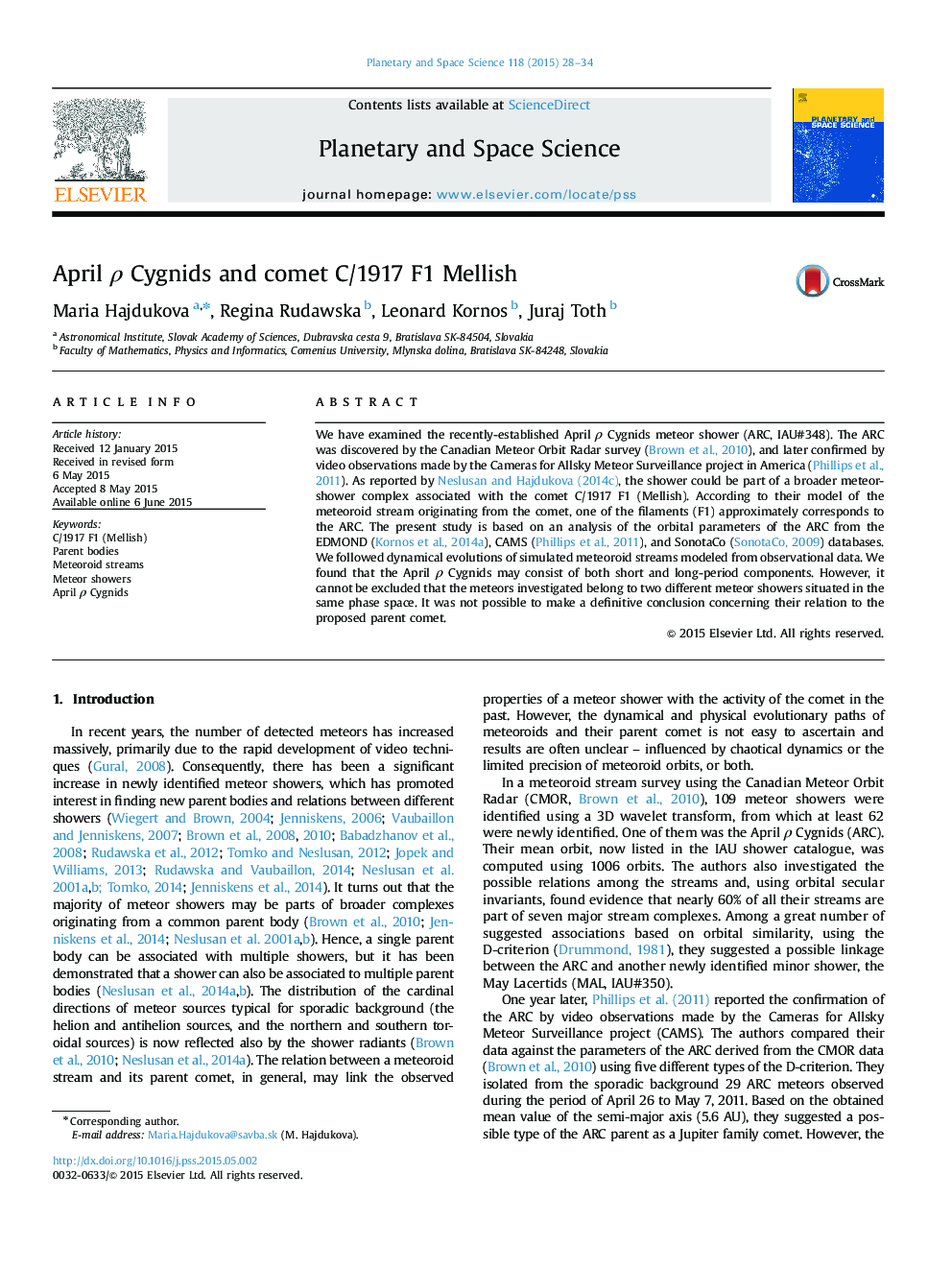| Article ID | Journal | Published Year | Pages | File Type |
|---|---|---|---|---|
| 1780891 | Planetary and Space Science | 2015 | 7 Pages |
•We examined the stream of April ρ Cygnids and modeled its orbital evolution.•We compared the ARC from the EDMOND, CAMS and SonotaCo catalogues.•We determined the mean orbit of the April ρ Cygnids from the EDMOND data.•The April ρ Cygnids may consist of both short and long-period components.•The April ρ Cygnids might be associated with the comet C/1917 F1 (Mellish).
We have examined the recently-established April ρ Cygnids meteor shower (ARC, IAU#348). The ARC was discovered by the Canadian Meteor Orbit Radar survey ( Brown et al., 2010), and later confirmed by video observations made by the Cameras for Allsky Meteor Surveillance project in America (Phillips et al., 2011). As reported by Neslusan and Hajdukova (2014c), the shower could be part of a broader meteor-shower complex associated with the comet C/1917 F1 (Mellish). According to their model of the meteoroid stream originating from the comet, one of the filaments (F1) approximately corresponds to the ARC. The present study is based on an analysis of the orbital parameters of the ARC from the EDMOND (Kornos et al., 2014a), CAMS (Phillips et al., 2011), and SonotaCo (SonotaCo, 2009) databases. We followed dynamical evolutions of simulated meteoroid streams modeled from observational data. We found that the April ρ Cygnids may consist of both short and long-period components. However, it cannot be excluded that the meteors investigated belong to two different meteor showers situated in the same phase space. It was not possible to make a definitive conclusion concerning their relation to the proposed parent comet.
